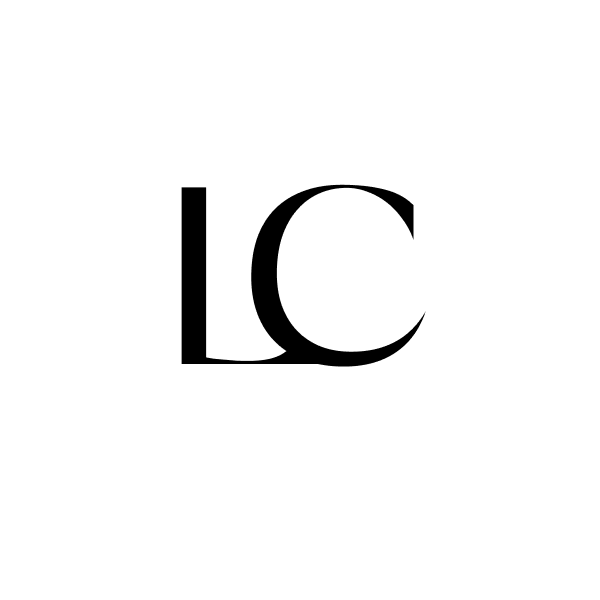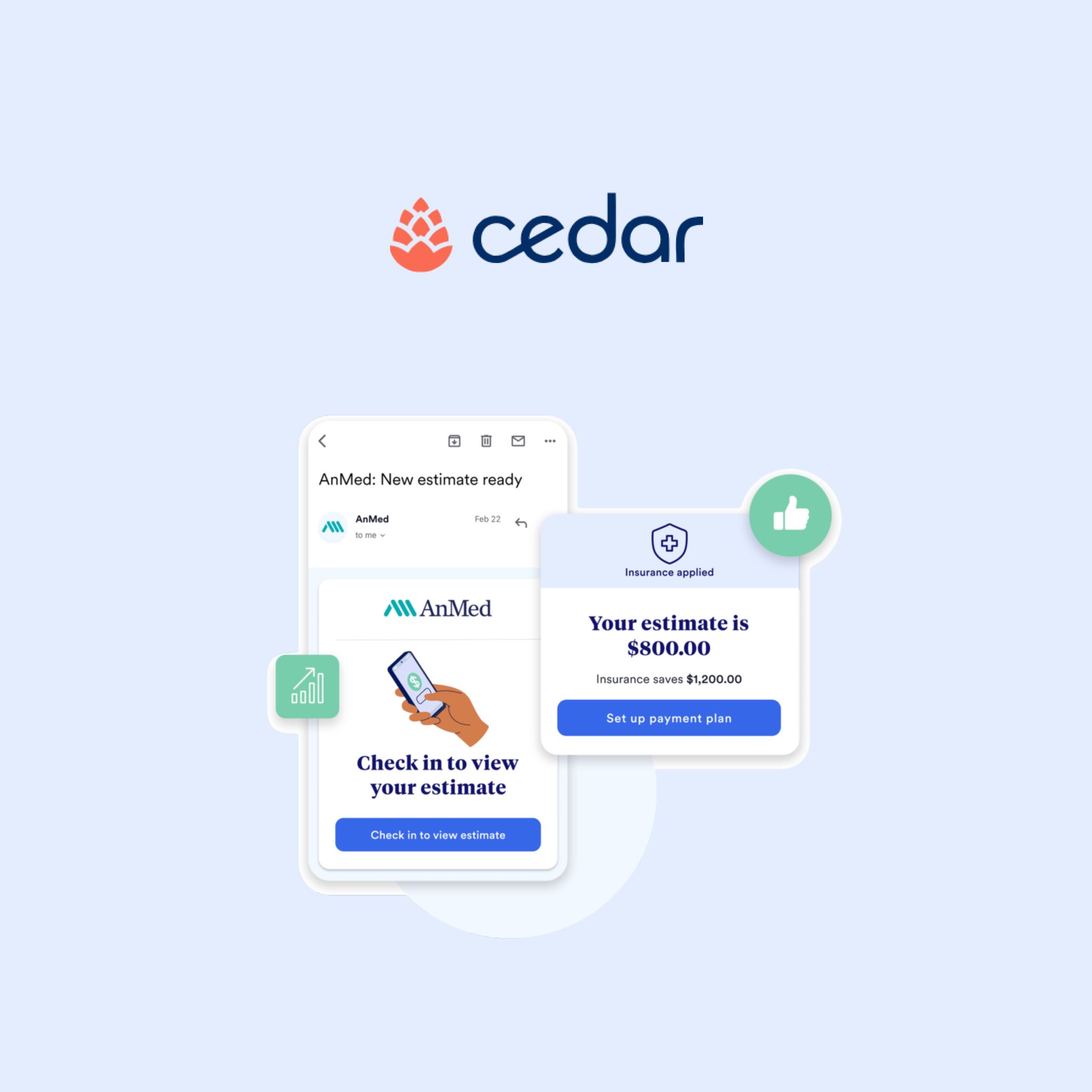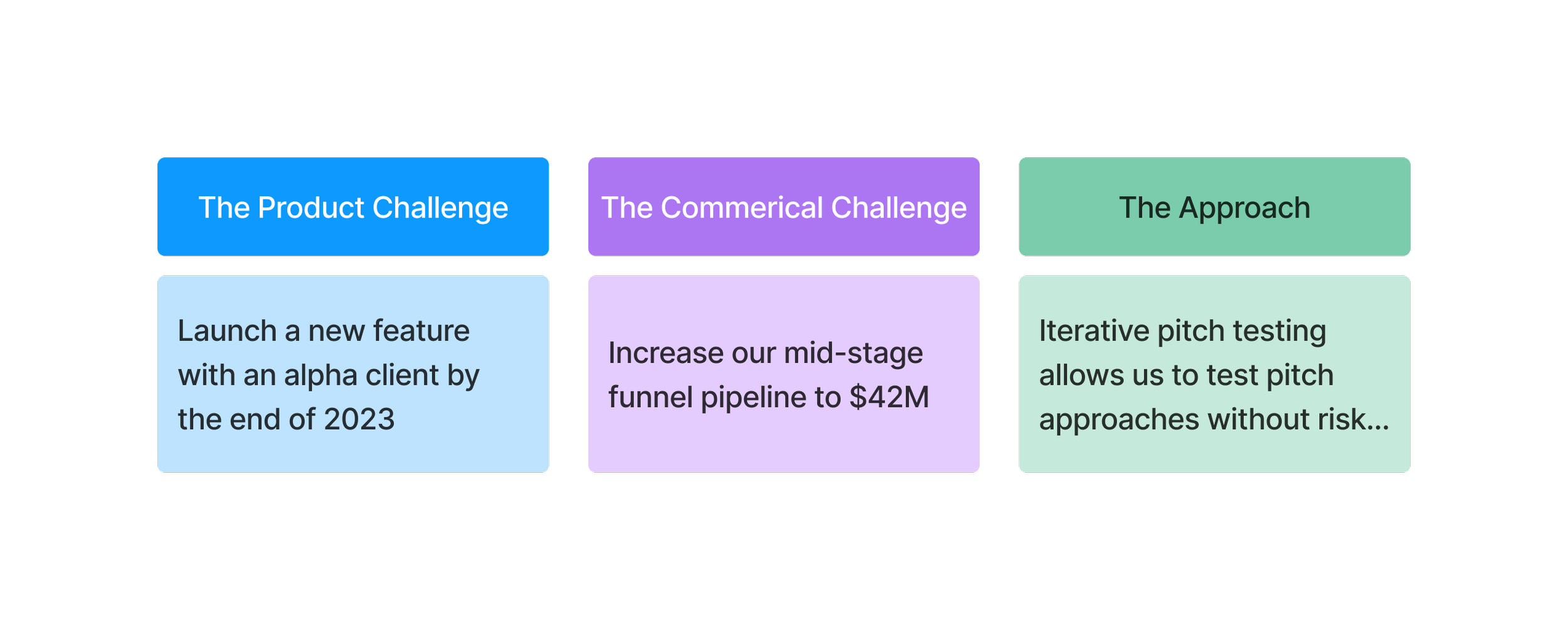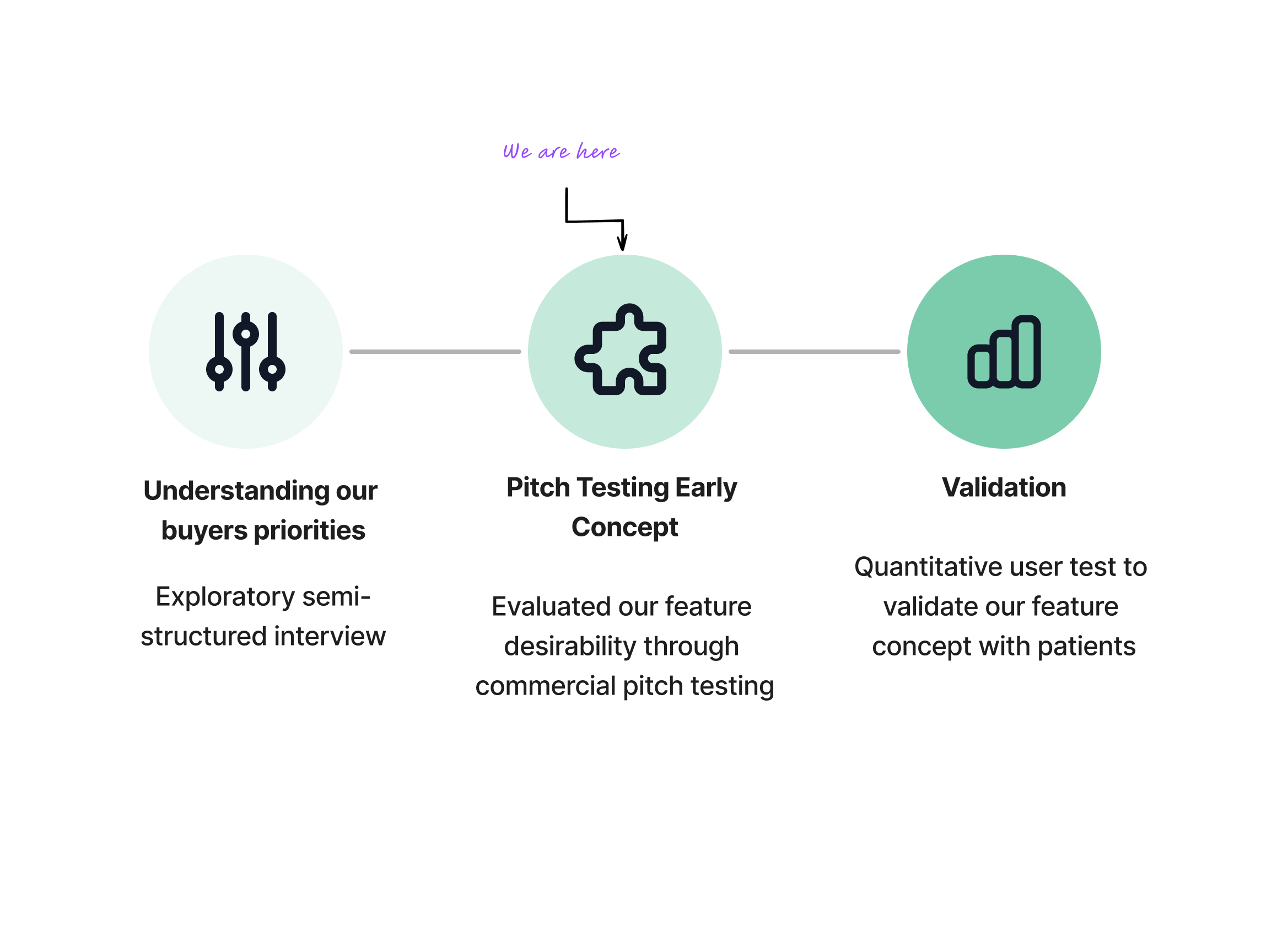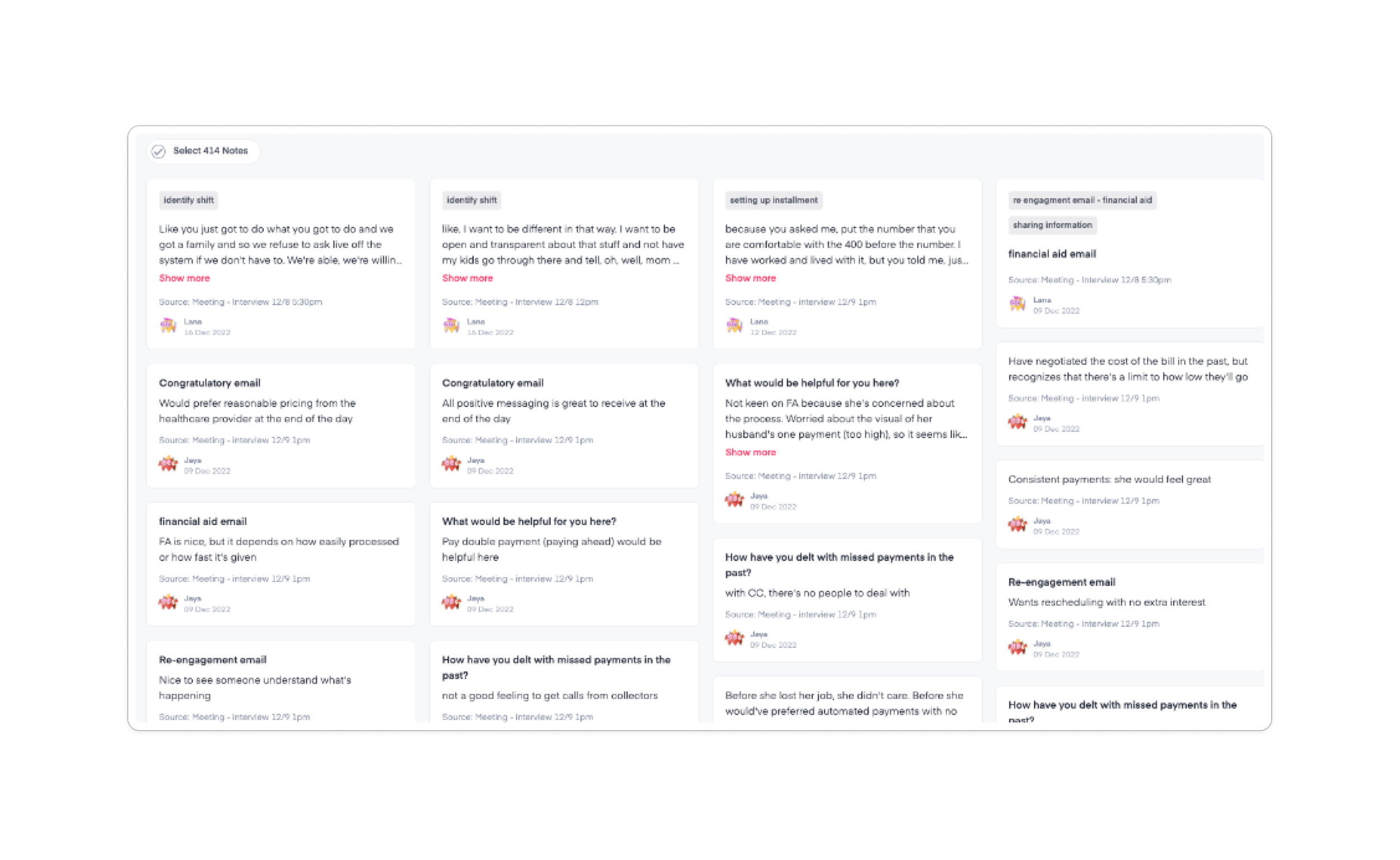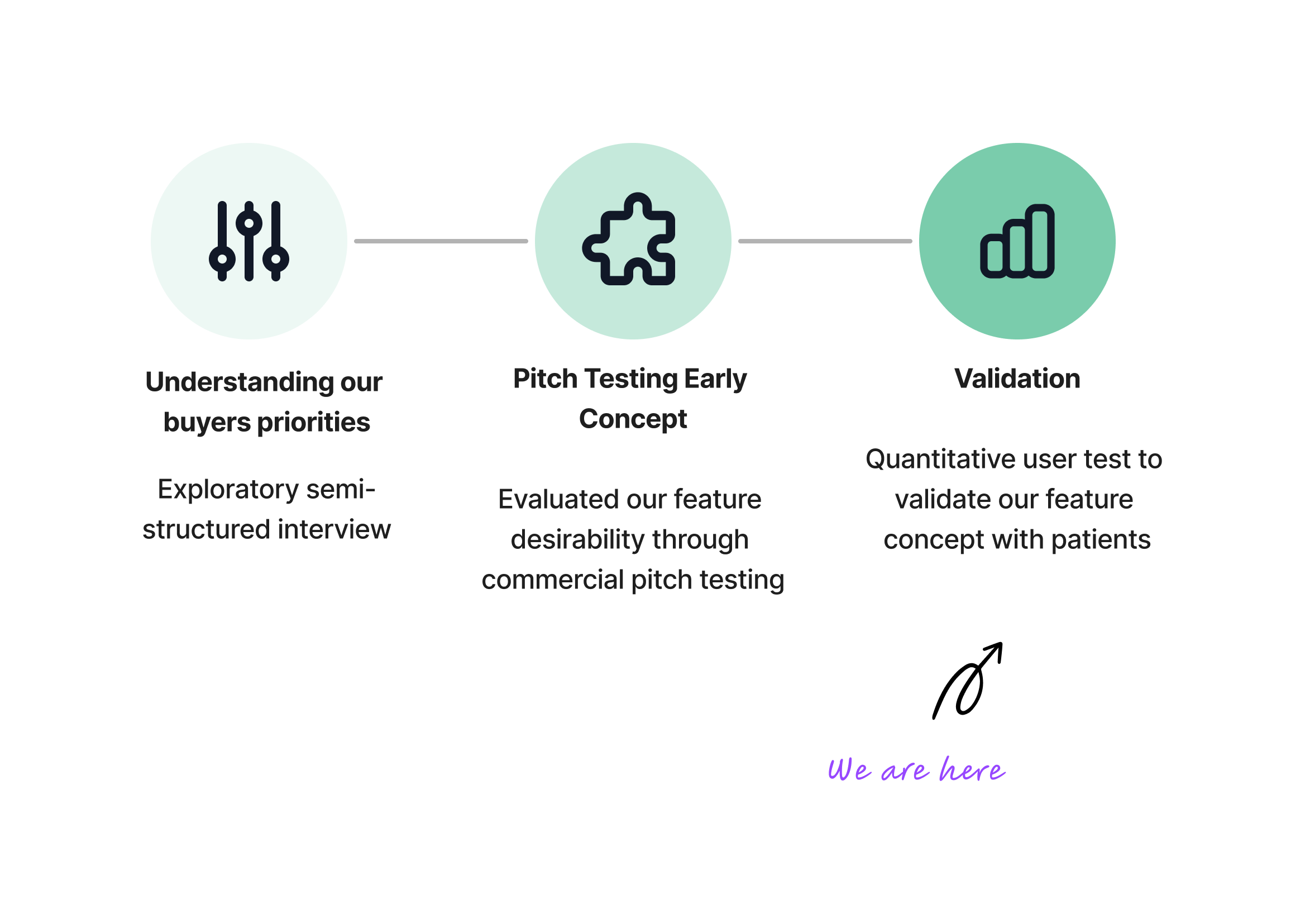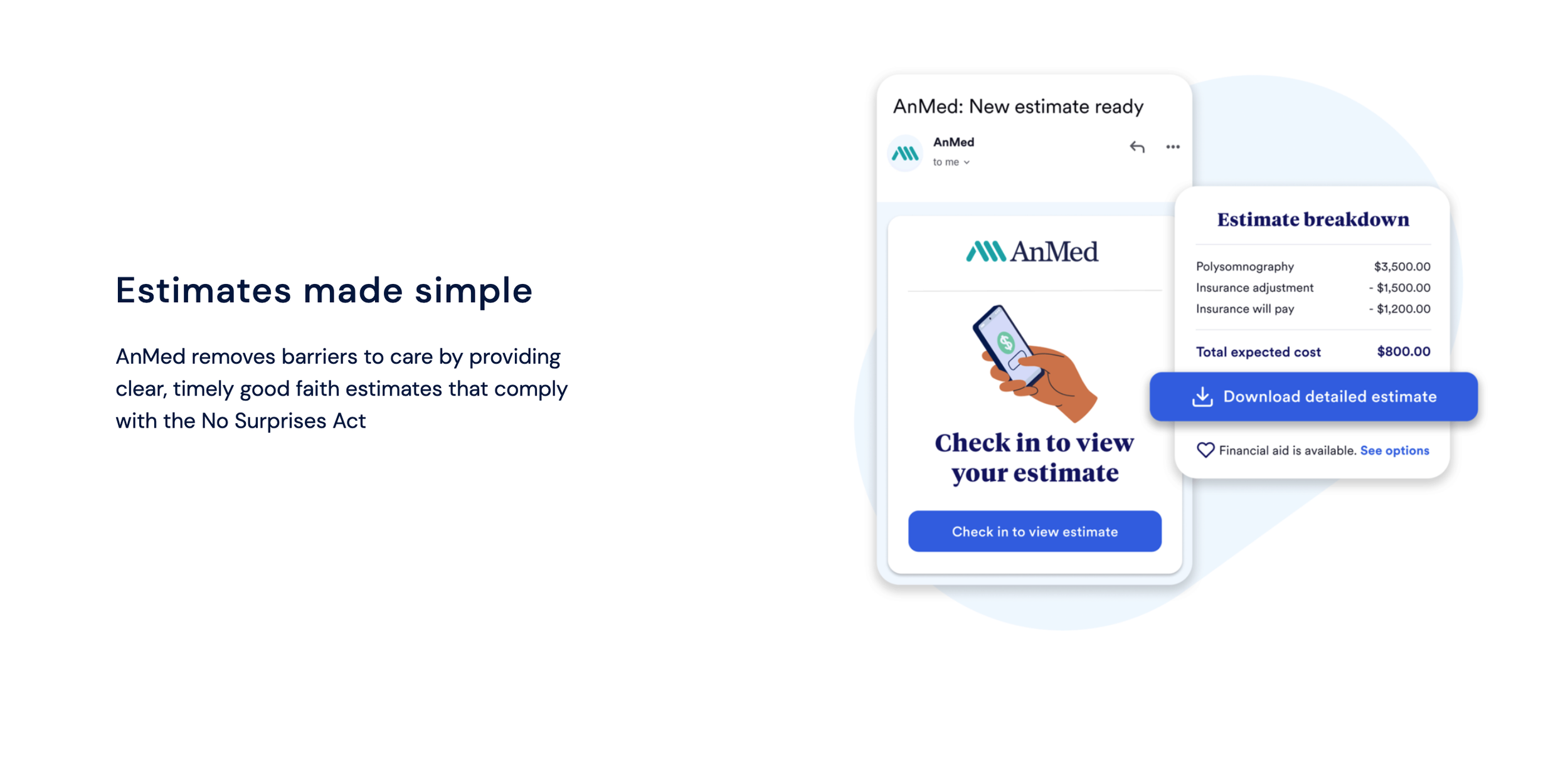Part 2:
Finding value for patients and providers
My Role
Lead UX Researcher
Responsibilities
Research, Synthesis, Ideation, Testing
Timeline
1 month
Cedar is a consumer-friendly enterprise platform that helps reduce admin burden and billing friction, leading to better financial outcomes for providers and patients.
Cedar Pre engages patients before their visit with a digital check-in solution. Before their appointment, patients can fill out their paperwork, check-in, view and pay their copay, and view their visit estimate.
Based on our buyer insights, we prioritized the design and development of our new feature, guaranteed estimates, which promises patients an upfront care price from their provider.
THE PROBLEM
It’s Q1, and we have strong goals to sell in the market and launch a new feature, Guaranteed Estimates, with an Alpha Client.
Every business problem can provide user value
To drive early collections, we could simply ask patients to pay upfront, but past interviews revealed a deeper need. With the rising cost of care, patients are increasingly avoiding it altogether. By guaranteeing the cost of care upfront, we could offer patients transparency, build trust between providers and patients, and boost our crucial early collection rates.
THE APPROACH
Every business problem can provide user value
To drive early collections, we could simply ask patients to pay upfront, but past interviews revealed a deeper need. With the rising cost of care, patients are increasingly avoiding it altogether. By guaranteeing the cost of care upfront, we could offer patients transparency, build trust between providers and patients, and boost our crucial early collection rates.
METHODOLOGY
We* spoke with 6 buyers**, across 2 rounds,
and tested a blinded version of our Cedar Pre Pitch, highlighting our new feature, guaranteed estimates
* We had the Commerical Director pitch the product, creating a realistic scenario
**who reflected Cedar’s ideal customer and uses our competitor products
Why this method?
Commercial pitches are how we sell our product. The feedback from those pitches trickles down to the product and influences strategy. During those pitches, we don’t get to ask buyers questions to more deeply understand what about our product (and our sales pitch) isn’t resonating. By pitching our concept, we can test the way we sell our product while also getting deeper feedback on desirability.
SYNTHESIS
I led synthesis using Miro for the first round to help design quickly iterate on the pitch deck. After the second round, I used HeyMarvin to tag themes and identify insights across all the interviews.
INSIGHTS
What we believed…
We thought the key to selling our product was highlighting the potential upside to collections, believing that would capture their interest.
What we learned…
Providers often hear grandiose pitches, but they need to see how it works. While driving early collections sparks interest, a convincing, data-driven story is crucial. They want proof, not promises.
Validating our Concept with Patients
THE *NEW* PROBLEM
Providers were not yet convinced that we could meaningfully drive value with “Guaranteed Estimates.”
We had explored the concept of guaranteeing a price for patient care a year earlier and had a strong hunch* that patients would love a guaranteed price for healthcare, but buyers wanted proof that it would increase early collections. Cedar wanted a buyer to sign before building out the feature.
*our hunch was based on dozens of qualitative interviews and market research where patients were delaying care for fear of the unknown costs.
Research Goals
We wanted to validate how much a guaranteed price would impact a patient's willingness to pay upfront to:
Ensure we’re building a feature that patients would use
Strengthen our value prop with healthcare providers
METHODOLOGY
I conducted a quantitative user test with different groups, including 50 participants in each group, to assess their likelihood to pay the guaranteed estimate and the importance they place on the guaranteed price.
Null Hypothesis: Guaranteed Estimates have no impact on a patients’ likelihood to pay.
Why this method?
With a quantitative user test (n=100) we could get a stronger signal on how valuable a guaranteed price would be for patients.
RESULTS
20% more patients were likely to pay for a guaranteed estimate compared to our current estimate.
Backing up the methodology
Initially, the VP of Product didn’t know how reliable this data was because it measured patient attitudes.
However, our attitudinal measure closely resembled actual patient payment behavior, a signal that our attitude data for guaranteed estimates is a good leading indicator of actual payment.
IMPACT
De-risking Ideas Early
Identifying providers' biggest concerns with our features enabled our product team to focus on our gaps before they pitched to real clients.
Guaranteed Estimates was pitched and signed by an alpha client, meeting our company OKRs, and is currently being prioritized for testing and building.
Shaping Product Culture
Our iterative pitch testing also helped us identify best practices for pitching to clients. As a result, I ran a workshop to train our Product Managers on how to run iterative pitch testing.
“I encourage all of you [PM’s] to do this research. It’s incredibly effective in helping us rapidly test ideas and put our best foot forward with our clients.” – VP of Product
